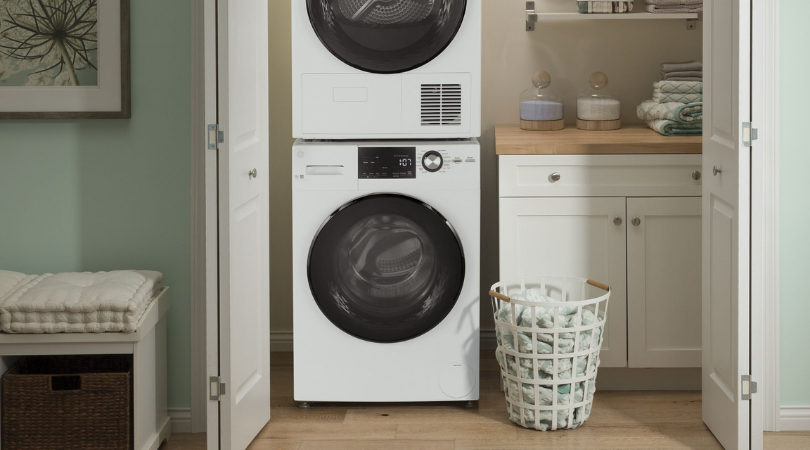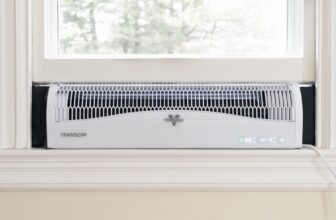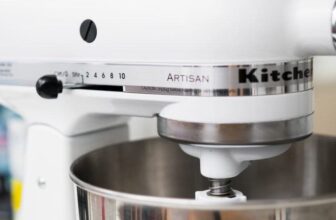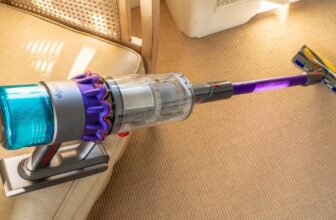
[adinserter block=”2″]
When you clean a front load washer, you’re not just removing lint and dust. You’re fighting a battle against mold and mildew, not to mention the musty smell that comes along with them. The only way to keep the odor at bay is cleaning your machine, one laundry day at a time.
When front load washing machines first debuted in the U.S. in the late ’90s, they won people over because they don’t have an old-fashioned agitator. They can wash clothes without beating up the fabric. But that’s not their only advantage: Even though most Americans still have a top loader, front load washers keep rising in popularity because they clean clothes more thoroughly, run more quietly and efficiently, give you more installation options (i.e., they can be stacked, which is huge), and spin faster, saving time and energy during drying.
But there’s one caveat: Front load washers can be a handful to maintain. That’s something you should know up, well, front if your dream washer and dryer set are front load style.
All it really takes is consistency, starting with the very first load you throw in. Keep reading for our foolproof cleaning formula to prevent mold and mildew from stinking up your machine, plus expert tips to make maintenance easier.
Why Do Front Load Washers Smell Bad?
First let’s look at the culprit behind this problem: mold. Where does it come from, and why pick on front loaders? As amazing as these machines are, the way they’re built encourages mold growth. The door has to be waterproof and airtight to prevent leaks, and the components that seal it can hang onto mold-causing moisture.
That’s why mold is arguably the biggest sticking point in the front load vs top load washer debate.
Front loader washers have a heavy rubber gasket that surrounds the door and forms a leakproof seal that keeps detergent and water in during the wash cycle. In addition, the detergent dispensers on front load washing machines are notoriously poor when it comes to drainage. Even the drum of these machines can hold onto moisture in a way top load washers just don’t, since it can evaporate through the space around the lid.
Water, excess detergent, and oils from your clothes can build up in these three spots, creating a veritable buffet for mold, mildew, and bacteria.
Over time, your washing machine can develop a musty odor as a result of mold and mildew growth. If it gets out of control, your clothes will end up taking on this smell as well. Until these issues are solved by the manufacturers—and they’re working on it!—you’ll need to stay on top of mold if you opt for a front loading washer.
Not sure whether you want a front load or top load washer? Our latest head-to-head comparison video weighs all the pros and cons.
How to Prevent Odors in a Front Load Washer
It takes only a bit of regular cleaning to keep your front load washing machine free of mold, mildew, and their associated stench. You can make it even easier by incorporating these tips into your laundry routine:
- Always use HE detergent. They’re specially formulated to clean using less water and suds than regular detergent, which means less soap can linger in the drum, gasket, and dispenser. Don’t use any that say they’re merely “front load compatible.”
- Use the correct amount of detergent. Using too much detergent won’t make your clothes smell better or get cleaner. Instead, it works in quite the opposite way: it doesn’t rinse away completely. The excess detergent will build up in the tub and gasket, giving mold something to nosh on and leaving a dingy film on your clothes.
- Consider a plant-based detergent. Many commercial liquid laundry detergents are petroleum-based, which makes them more likely to leave behind an oily, filmy residue in your machine—especially if you use too much. Plant-based laundry detergents rinse away cleaner with every cycle.
- Include bleach or Borax occasionally. Once a week, run your washing machine without clothing on a hot cycle. Add ½ cup bleach or Borax (a naturally occurring mineral, sodium tetraborate, that softens water, giving detergent a boost and helping remove soap residue) to the load to scrub the drum and the rubber gasket. Alternatively, you could add a bit of bleach to your weekly load of whites to freshen up your washer.
- Inspect the drain hose. In rare instances, your drain hose might be pushed too far into the drain stand pipe so that it’s allowing dirty water to run back into the machine and cause a musty odor. Ideally the hose should be clipped to the side of the stand pipe to prevent this issue.
Pro Tip: Don’t ignore the clearest sign of all that your washer needs a little TLC: an auto alert. That’s right, many washers notify you when they need to be cleaned. For instance, our favorite front loader for mold prevention, the GE GFW850SPNRS, tells you when it’s time to run its self-clean cycle. It also has built-in features to help prevent mold, like a venting system called UltraFresh and Microban antibacterial surfaces.

How to Clean a Front Load Washer Daily
We’ve all heard the saying, “An ounce of prevention is worth a pound of cure.” Those wise words certainly apply to a front load washing machine. Take these steps to clean a front load washer after you’ve moved the last load of the day into the dryer.
1. Gather Supplies
You need only two basics: a soft, clean cloth and a multipurpose cleaner (we like Biokleen). Keep them in your laundry room, and it’ll make these steps easier to remember.
2. Clean the Gasket
Spritz the cloth with cleaner and wipe down the gasket around the door. Be sure to gently fold it back to clean the inside, too. You might be surprised by what you find in there: hair, pet hair, stickers from clothing, lint… There will also be excess water.
3. Hit the Detergent Dispenser
Use your trusty cleanser and cloth to wipe out the detergent dispenser drawer.
4. Let ‘Em Dry
Leave the dispenser open and the door ajar so they can fully dry out. This step is most important. If you do nothing else, leaving the door open so that water can evaporate is key. Ask your family members to do this even if they’re not responsible for cleaning.

How to Deep Clean Your Front Load Washer
About once a month, or more often if you do a lot of laundry, you’ll want to give your front load washing machine a more thorough cleaning. Follow the steps below if you’re wondering how to clean a front load washing machine, including the drum.
1. Gather Supplies
For this simple process, you’ll need:
- A soft, clean cloth
- Multipurpose cleaning spray (we like Biokleen)
- Distilled white vinegar, bleach, or Borax and washing soda; you can also use a commercial cleaner like Affresh
2. Wipe the Danger Zones
Wipe down the detergent dispenser, drum, door gasket, and exterior of the machine with a soft cloth spritzed with cleaner. Wipe down the dryer while you”re at it, too.
3. Clean the Drum
Add your cleaner of choice—2 cups of distilled white vinegar; ¼ cup bleach; some Borax and washing soda; or a commercial cleaner like Affresh—directly to the drum and run a hot cycle with no clothes. If your washer doesn’t specifically have a hot water cycle, choose the “whites,” “stain,” or “heavy” setting. Manually select a second rinse cycle if your washer has one. If not, run the same cycle a second time without the cleaner.
4. Let ‘Em Dry
Leave the door and detergent dispenser drawer open so they can dry after the cycle’s finished.
If your washer’s still smelly after this, repeat steps 1 through 4 until the odor’s gone.
Pro Tip: Miele washing machines should NOT be cleaned with bleach; it can damage the machine’s components. Just use the “clean machine” program and wipe out the detergent dispenser (even if your machine has the TwinDos automatic detergent dispenser and you don’t use it). The company also says not to use a commercial cleaner on the exterior since they’re too abrasive. A damp cloth should be plenty. You can use a stainless steel cleaner to clean the drum.

Conclusion
Although they require a bit more maintenance than top load washers, front load washers still come out ahead in our opinion. They’re excellent at cleaning clothes, and they’re energy efficient.
Taking the time to keep your front load washing machine clean will ensure your clothes stay in top condition and smell as fresh as possible. It’s not too much of a chore if you make it part of your routine.
But if this sounds like too much to you, consider a top load washer instead—they require practically zero maintenance.
[adinserter block=”2″]
Credit : Source Post






